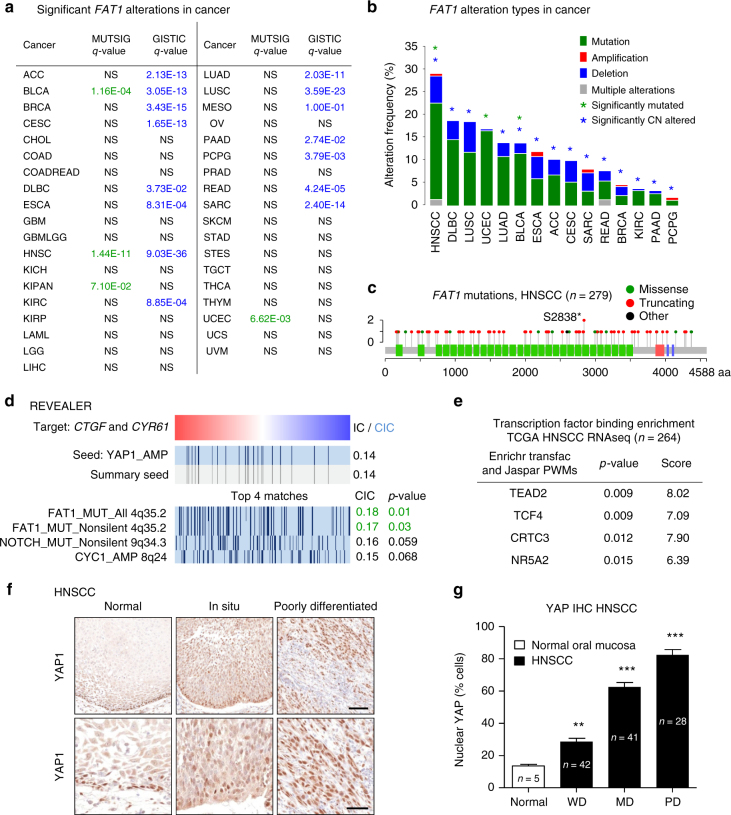Fig. 1.
Frequent alterations of FAT1 are linked to YAP1 overactivity in cancer. a Analysis of FAT1 alterations in human malignancies. The significance of FAT1 alterations in a panel of common human malignancies was analyzed by the MUTSIG and GISTIC methods. NS: not significant. See abbreviations and number of cases analyzed for each cancer type in Supplementary Fig. 1. b Graphical representation of cancer types in which FAT1 is most frequently altered. c Analysis of FAT1 mutations in 279 fully characterized HNSCC samples from TCGA. d REVEALER analysis on the TCGA HNSCC RNASeq dataset (n = 504) was used to identify genomic abnormalities that negatively correlate with YAP1 amplification and increased expression of the YAP1 targets CTGF and CYR61. e Enrichment analysis of transcription factor binding sites on upregulated genes in HNSCC samples harboring FAT1 and FAT2 alterations. f YAP1 immunohistochemistry depicting the increase of expression levels and nuclear localization (activation) during HNSCC disease progression. Scale bar upper panels, 100 µm, lower panel, 50 µm. g YAP1 staining quantification. WD, well differentiated; MD, moderately differentiated; PD, poorly differentiated. Bars represent average plus standard error of the mean (SEM). **P < 0.01, ***P < 0.001 (One-way ANOVA)

